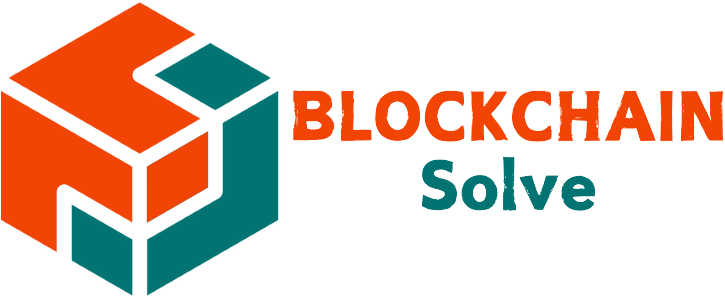In the rapidly evolving landscape of distributed ledger technology, grasping the foundational elements is crucial. At the heart of every robust blockchain network lies a critical component: the node. Many might hear the term without fully understanding its profound significance. This comprehensive guide will demystify what is a blockchain node, exploring its function, various types, and its indispensable role in maintaining the security, integrity, and decentralization that define blockchain technology. By delving into these essential building blocks, you will gain a clearer insight into how decentralized networks truly operate.
The Core Concept of a Blockchain Node
At its core, what is a blockchain node refers to a computer or device participating in a blockchain network. Think of it as a fundamental building block, actively maintaining network integrity and security. Each node hosts a complete or partial copy of the blockchain ledger. This enables it to verify transactions and blocks. Without nodes, a decentralized network would cease to exist. They prevent a single point of failure and ensure data immutability. Nodes act as distributed servers, collectively validating and propagating every piece of information across the network.
These nodes are the backbone of decentralization, ensuring no single entity controls the data. They collectively uphold the network’s rules, making it robust against censorship and manipulation. This distributed architecture is precisely why blockchain technology offers unparalleled transparency and trust. Understanding their role is crucial for grasping how any undefined truly operates in the modern digital landscape. Nodes are not merely passive observers; they are active participants, constantly communicating to maintain a synchronized and secure global ledger.
How Blockchain Nodes Operate and Their Functions

Blockchain nodes are vital for network health, performing critical functions that define what is a blockchain node in action. Their primary role involves verifying transactions and newly created blocks. When a transaction is initiated, nodes receive and validate it against predefined rules. This includes checking for sufficient funds and correct digital signatures. Validated transactions are then pooled and assembled into blocks by specific node types.
- Transaction Validation: Nodes check each transaction against the blockchain’s rules to ensure its legitimacy.
- Block Verification: They verify that new blocks adhere to the network’s undefined, including Proof-of-Work or Proof-of-Stake requirements.
- Data Storage: Many nodes store a complete copy of the blockchain’s transaction history, making the ledger publicly verifiable and resistant to tampering.
- Network Propagation: Validated transactions and blocks are then relayed by nodes to other participants across the decentralized network, ensuring consistency.
These operations collectively ensure the network’s integrity, transparency, and resilience, forming the bedrock of decentralized trust.
Different Types of Blockchain Nodes

Blockchain nodes are not uniform; each type plays a distinct, vital role. Understanding these differences is crucial for grasping blockchain architecture and participant contributions. This clarifies the expansive definition of what is a blockchain node.
Full Nodes
Full nodes are the bedrock of blockchain security and decentralization. They download and store the entire ledger, independently verifying all transactions and blocks. This eliminates third-party reliance. Though resource-intensive, full nodes offer the highest undefined by enforcing all network rules.
Light Nodes (SPV Clients)
Light nodes, or SPV clients, do not download the full blockchain. They fetch only block headers and specific transaction data as required. Resource-efficient, they depend on full nodes for verification, making them less secure. Mobile wallets often use light nodes.
Mining and Validator Nodes
Mining (Proof-of-Work) and validator (Proof-of-Stake) nodes create new blocks. Mining nodes solve cryptographic puzzles to propose blocks and earn rewards. Validator nodes stake crypto, chosen to validate transactions and create blocks, earning fees. Both are crucial for blockchain extension and security, embodying diverse undefined.
The Importance of Nodes in Decentralization and Security

The distributed nature of blockchain nodes is fundamental to the very principles that make blockchain technology revolutionary: decentralization, security, and censorship resistance. Each node acts as an independent verifier and gatekeeper, collectively forming a robust network. This resilience makes it incredibly difficult to compromise. Understanding what is a blockchain node reveals its critical role in upholding these core tenets.
No single entity controls all nodes, eliminating central points of failure. This decentralization ensures the blockchain remains operational and its data immutable. Even if many nodes go offline, the network persists. Collective validation by numerous independent nodes provides high security. Any malicious attempt to tamper with the ledger would require overpowering a majority, which is computationally infeasible for major blockchains.
Ultimately, nodes act as sentinels of truth, embodying the trustless nature of blockchain technology. They ensure all participants adhere to agreed-upon rules. This makes the network fair, transparent, and resistant to authoritarian control. Their continuous operation reinforces the integrity of the entire distributed ledger system.
In conclusion, blockchain nodes are far more than just connected computers; they are the bedrock of the decentralized revolution. By understanding their varied roles and their collective commitment to validating and maintaining the ledger, we gain a deeper appreciation for the integrity and resilience of blockchain networks. From full nodes ensuring ultimate security to validator nodes driving consensus, each component plays an indispensable part in securing the future of digital trust. Explore more about the foundational technologies shaping tomorrow with Blockchain Solve.

